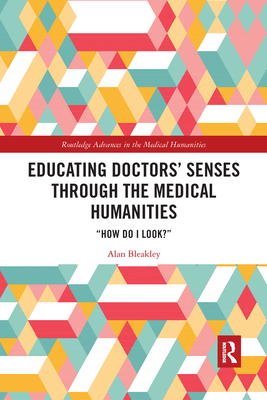Educating Doctors’ Senses Through the Medical Humanities: "How Do I Look?" uses the medical diagnostic method to identify a chronic symptom in medical culture: the unintentional production of insensibility through compulsory mis-education.
Educating Doctors Senses Through the Medical Humanities: "How Do I Look?" uses the medical diagnostic method to identify a chronic symptom in medical culture: the unintentional production of insensibility through compulsory mis-education. This book identifies the symptom and its origins and offers an intervention: deliberate and planned education of sensibility through the introduction of medical humanities to the core undergraduate medicine and surgery curriculum.
To change medical culture is an enormous challenge, and this book sets out how to do this by answering the following questions:
- How has a compulsory mis-education for insensibility developed in medical culture and medical education?
- How is sensibility capital generated, who owns it and how is it distributed, mal-distributed and re-distributed? What is the place of resistance (or dissensus) in this process?
- How can the symptom of a developed insensibility be addressed pedagogically through introduction of the medical humanities as core and integrated curriculum provision?
- How can both the identity constructions of doctors and doctorpatient relationships be tied up with education for sensibility?
- How can artists work with clinicians, through the medical humanities in medical education, to better educate sensibility?
The book will be of interest to all medical educators and clinicians, including those health and social care professionals outside of medicine who work with doctors.
Get Educating Doctors' Senses Through the Medical Humanities by at the best price and quality guranteed only at Werezi Africa largest book ecommerce store. The book was published by Taylor & Francis Ltd and it has pages. Enjoy Shopping Best Offers & Deals on books Online from Werezi - Receive at your doorstep - Fast Delivery - Secure mode of Payment
 Jacket, Women
Jacket, Women
 Woolend Jacket
Woolend Jacket
 Western denim
Western denim
 Mini Dresss
Mini Dresss
 Jacket, Women
Jacket, Women
 Woolend Jacket
Woolend Jacket
 Western denim
Western denim
 Mini Dresss
Mini Dresss
 Jacket, Women
Jacket, Women
 Woolend Jacket
Woolend Jacket
 Western denim
Western denim
 Mini Dresss
Mini Dresss
 Jacket, Women
Jacket, Women
 Woolend Jacket
Woolend Jacket
 Western denim
Western denim
 Mini Dresss
Mini Dresss
 Jacket, Women
Jacket, Women
 Woolend Jacket
Woolend Jacket
 Western denim
Western denim
 Mini Dresss
Mini Dresss






























































